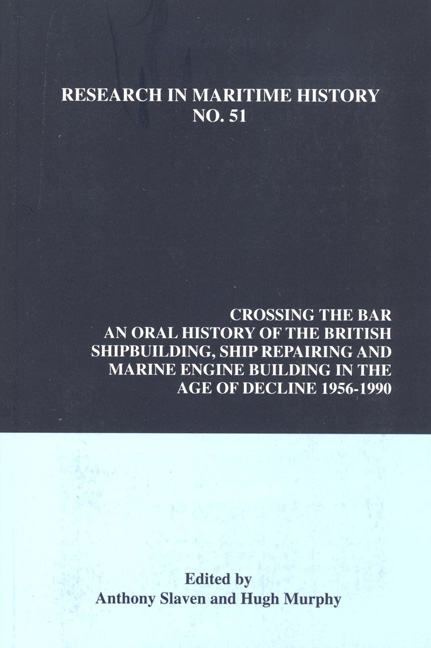 Crossing the Bar
Crossing the Bar from The Tyne
In 1950, I was apprenticed as a Ship Draughtsman with Swan Hunter. On completion in 1955, I then spent a year in the shipyard as a journeyman; it involved three months in the Loft, two months in the Plumbers Shop and the Electrical Shop, and then time working with the shipwrights, carpenters, platers and fitters lining off. I then spent two years National Service in the Royal Air Force throughout the Far East, before returning to Swan Hunter in 1958 to work in the Steel Drawing Office. There, I calculated scantlings for steel and aluminium structures, and welding profiles ensuring that they complied with regulatory bodies’ requirements. Around May 1959, I joined the Ship Estimating Office, which I took to like a duck to water. By 1961, I was appointed Section Leader, and two years later, Cost Controller, before in 1964 being placed in charge of all purchasing and material handling. In 1967,1 was appointed Group Purchasing Co-ordinating Manager and Material Controller, and three years later, Purchasing Director. By 1974, I was appointed Deputy Chairman, Chief Executive in 1976, and Chairman and Chief Executive in 1977. Under British Shipbuilders I was a part-time Board Member, and in 1981 was appointed non executive Chairman of Cammell Laird, and overall Managing Director of the Composite Shipbuilding Division. In November 1981, I was appointed a full executive Board Member, and Executive Vice Chairman of British Shipbuilders Offshore Division. A year later I was appointed a Managing Director of British Shipbuilders [one of four]. In 1982, I had resigned from my chief executive position at Swan Hunter, but retained the Chairmanship in a non executive capacity. In May 1983, I was appointed non executive Chairman of Scott Lithgow. When Scott Lithgow was sold, and when Cammell Laird [the two large companies in the ill-fated Offshore Division] integrated into Vickers in 1984, I became Executive Chairman of Vosper Thornycroft, which was subsequently successfully privatised. Thereafter, in January 1987, I was appointed Managing Director of NESL for the last three months before its closure, and subsequently I was made redundant by British Shipbuilders.
Swan Hunter had a lot of orders in the late 1950s. However, the market had changed significantly.
To save this book to your Kindle, first ensure [email protected] is added to your Approved Personal Document E-mail List under your Personal Document Settings on the Manage Your Content and Devices page of your Amazon account. Then enter the ‘name’ part of your Kindle email address below. Find out more about saving to your Kindle.
Note you can select to save to either the @free.kindle.com or @kindle.com variations. ‘@free.kindle.com’ emails are free but can only be saved to your device when it is connected to wi-fi. ‘@kindle.com’ emails can be delivered even when you are not connected to wi-fi, but note that service fees apply.
Find out more about the Kindle Personal Document Service.
To save content items to your account, please confirm that you agree to abide by our usage policies. If this is the first time you use this feature, you will be asked to authorise Cambridge Core to connect with your account. Find out more about saving content to Dropbox.
To save content items to your account, please confirm that you agree to abide by our usage policies. If this is the first time you use this feature, you will be asked to authorise Cambridge Core to connect with your account. Find out more about saving content to Google Drive.